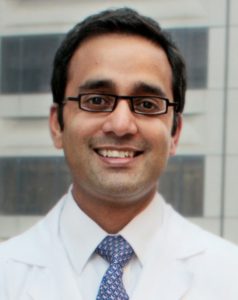Northwestern Medicine leads largest device study ever conducted in diastolic heart failure and the first pivotal trial of interatrial shunts completed

A Northwestern Medicine-led study published in The Lancet suggests that some patients with the most common form of heart failure may benefit from a novel, minimally invasive cardiac implant device called an atrial shunt. The study also offers new insight into the role exercise plays in understanding, diagnosing and treating this type of heart failure.
Heart failure with preserved ejection fraction (HFpEF), also called diastolic heart failure, affects 3 million Americans. Despite being the most common type of heart failure in the United States, effective treatments remain elusive, leading to high morbidity and mortality.
“HFpEF makes up half all heart failure cases, yet we have very limited treatment options,” said Sanjiv Shah, MD, the Neil J. Stone, MD, Professor of Medicine in the Division of Cardiology and lead author of the study. Shah is also director of research at the Bluhm Cardiovascular Institute and director of the Northwestern Medicine HFpEF Program.
“Most standard therapies for heart failure are ineffective in this condition, leaving a major unmet need for a large patient population,” Shah said.
This type of heart failure occurs when the left ventricle is unable to relax, limiting the amount of blood filling into the heart, which causes fluid to build up in the lungs and the body, causing symptoms including shortness of breath, fluid retention, irregular heartbeat and exercise intolerance.
“While the overall trial was neutral, in our subgroup analyses we found that what happens in the heart and lungs during exercise is of prime importance in this type of heart failure,” said Shah, who served as the international principal investigator of the trial. “The normal response to exercise is relaxation of the blood vessels in the lungs. Patients with HFpEF who are able to relax the blood vessels in their lungs appear to do well with the device, whereas those whose blood vessels can’t relax appear to do worse when an atrial shunt is implanted.”
An atrial shunt is placed through a catheter, creating a small hole between the left and right atria allowing blood to flow from the stiff left atrium to the normal right atrium, potentially lowering pressure in the left atrium and reducing the symptoms of HFpEF. The procedure is minimally invasive, low-risk and patients go home the next day.
“What we saw in this study is encouraging and suggests that future clinical trials should specifically investigate the subgroup of patients with HFpEF whose pulmonary blood vessels respond normally to exercise,” Shah said. “If future trials validate what we found, the potential is enormous. This subgroup comprises two-thirds of people with this type of heart failure – that is 2 million people could benefit from this innovative therapy. This simple, one-time procedure could reduce hospitalizations and significantly improve quality of life.”
While cardiovascular conditions such as coronary artery disease are routinely diagnosed with exercise testing, clinical assessment for HFpEF is done at rest – something that Shah said he hopes will change following this trial.
“This has potential to change the way we evaluate patients with this condition and should guide how future clinical trials are conducted and the criteria for enrollment,” Shah said.
The Corvia REDUCE LAP-HF II pivotal trial is the largest device study ever conducted in HFpEF and the first pivotal trial of interatrial shunts completed. The results were also presented today at the Cardiology Research Foundation (CRF)’s Technology and Heart Failure Therapeutics meeting.
Funding for the study was provided by Corvia Medical.






